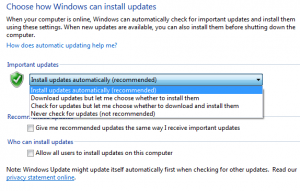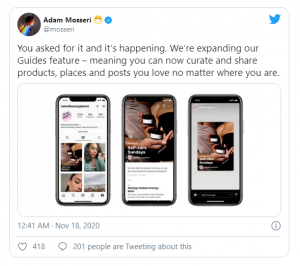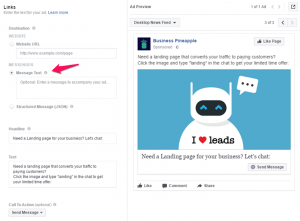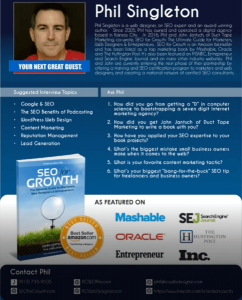
MSP programs thrive on partnership, not partisanship
The latest Contingent Workforce Strategies Summit in Dallas was a bustling affair, filled with strategy sessions, innovative discourse and ideas to shape the evolution of modern employment. Yet amid the fresh perspectives and forward-looking prospects of the staffing industry, one old and challenging topic crept into the conversation: a persistent sense of friction, rather than collaboration, between hiring managers and the MSPs tasked with supporting their goals.
An end-to-end workforce management program is a complex ecosystem of symbiotic partners that must depend on one another to succeed. Organizational leaders can focus on core areas of their businesses only when MSPs and hiring managers operate in concert. Hiring managers who communicate regularly and ally themselves with MSPs boast the highest program performance ratings. If collaboration is not fostered and actively orchestrated, the vital functions of the solution become jeopardized, hindering the ability of MSPs and their staffing partners to execute winning strategies.
United we stand, divided we fall
In a December 2013 article about the “groups that will try to kill your MSP/VMS program,” DCR Workforce identified hiring managers as the group most likely to resist enterprise-wide MSP/VMS programs. DCR Workforce found that hiring managers admitted operating outside the program to establish their own relationships with staffing suppliers, which contributed to rogue spend. The hiring managers expressed a lack of confidence with internal functions being able to meet or understand their needs. After a deeper examination of possible causes, DCR Workforce realized that as other corporate teams, such as Procurement and HR, competed for “ownership of the contingent workforce,” hiring managers believed their objectives were being overshadowed.
HRO Today’s article “Converting MSP Haters” revealed that the hiring managers they studied hesitated to embrace MSP/VMS programs for the same reasons: perceived loss of control, the inability of MSPs to understand their department’s unique requirements, and the uncertainty of implementing new processes and suppliers. “Because no one likes change,” HRO Today concluded.
MSPs are seasoned workforce consultants, not one-dimensional middlemen
MSPs aren’t just outsourced intermediaries that shoulder the burden of managing staffing suppliers. At their core, MSPs are highly experienced, skilled and certified workforce consultants who transform organizational talent initiatives as business process outsourcers. Many of their account professionals are credentialed through associations such as the Society for Human Resource Management (SHRM) or SIA’s Certified Contingent Workforce Professional program (CCWP). Their implementation leaders often hold product and purchasing management certifications (CPM). Many of their procurement and supplier relationship specialists wear a Six Sigma belt.
In short, MSPs are avowed experts in the contingent labor space, offering clients unparalleled libraries of best practices, regulatory knowledge, lessons learned, risk avoidance, cost containment and innovations gleaned from experiences at other engagements. Their role is to help hiring managers focus on reaching their business goals while ensuring the most efficient workforce optimization processes. And yet, many feel that hiring managers can become combative: arguing suggestions, discounting recommendations, and essentially fighting to uphold the status quo — a broken system that necessitated the presence of the MSP in the first place. Yet, through cooperation and partnership, the dynamics of the relationship can change for the benefit of all.
The effects of non-compliance with the MSP, however, can actually spell disaster for hiring managers. Obviously, there are issues with co-employment risk, differing regulations for contingent talent, classification protocols and so forth. Then there’s the big question of cost.
“If your MSP has implemented a rate card or standard mark-ups,” HRO Today notes, “the noncompliant manager typically pays more than compliant managers within the program. In some cases, this can be as little as 10 percent — the average savings achieved through an MSP, according to Staffing Industry Analysts. In other cases, costs can extend as high as 25 percent to 50 percent above standard rates. Less obvious is the risk associated with using vendors outside of a program.”
- MSPs standardize the processes for screening candidates, submitting candidates, onboarding candidates and seamlessly integrating them to their assignments.
- MSP have the time and training to focus on supplier and worker performance, becoming a critical source of visibility for busy hiring managers.
- MSPs assume responsibility for the compliance of all suppliers within the program. By going outside the program, hiring managers could find themselves courting unpleasant risks: neglecting required screenings, failing to verify mandatory insurance coverage with suppliers, not tracking spend and performance, and paying rates that are either too high or too low to encourage superior results.
Consider the 2005 Workforce Strategies expose of TransUnion LLC. The study found that 125 to 150 contingent workers were being sourced from more than 100 different vendors. The problem was that TransUnion’s department managers were negotiating the rates themselves. Where the market rate hovered at $ 50 per hour for a contingent worker, some TransUnion managers capped rates at $ 35 per hour, imposing insurmountable obstacles to recruiting skilled talent. Other managers spent more than $ 125 per hour for equally qualified workers. Eventually, the implementation of the MSP/VMS program allowed TransUnion to effectively manage its contingent workforce, mitigate risks and curb spend. How? Hiring manager communication and education.
How MSPs support their hiring manager partners for mutual wins
In our experience, as a supplier focused on partnering with MSP/VMS providers, we see unrivaled value to hiring managers in the following key areas.
Process optimization: The biggest asset of MSP/VMS solutions lies in program centralization — standardizing core competencies and communications between multiple participants: hiring managers, HR, procurement officers, executive sponsors, staffing suppliers and the talent itself. Contingent workers are often spread out across different departments and business units within the enterprise. Instituting a centralized MSP/VMS structure enables better tracking of workers from a dedicated source rather than relying on department managers to take time from their jobs to oversee contingent talent.
Visibility: MSPs provide hiring managers with a panoramic view of the contingent labor program, which encompasses spend management, fill rates, submittal rates, budgets, vendor and worker performance, business analytics and reporting, ongoing recommendations for best practices and enhancements, and more.
Cost savings: An MSP/VMS program contains costs and eliminates renegade spend through the enforcement of standardized rates across the supply base, automated approval processes through integrated technology, universal contract terms, market rate benchmarking and consolidated electronic invoicing. Redeploying the client’s internal resources to their core business activities also yields substantial soft cost savings internally.
Reduced risk: MSP/VMS programs ensure the proper classification of workers, delegation of duties, assignment and tenure policies, compliant on-/off-boarding processes and a uniform methodology for engaging qualified staffing partners with vetted talent.
Quality enhancements: MSPs monitor and report on Service Level Agreements and Key Performance Indicators for hiring managers. Regularly scheduled business reviews further facilitate enterprise-wide dialogs for continuous improvements, innovations and program scaling.
Reduced cycle times: With an automated requisition process managed by dedicated MSP account teams, hiring managers gain access to a wider talent pool, competitive supplier bidding, faster submittal times and optimized interviewing processes. MSP/VMS account teams also free hiring managers from the constraints of creating, distributing and evaluating job orders.
Forecasting: The datasets MSPs collect provide hiring managers with a treasure trove of information and analytics that can be used to forecast demands, usage and financial considerations for near-term and long-term planning.
Liberating hiring managers to focus on their core duties: MSPs alleviate busy hiring managers of countless administrative tasks. They facilitate requisition distribution and supplier correspondence, shortlist candidates that best match job requirements, schedule interviews, negotiate rates and handle the complete onboarding process. The positive impacts of these efforts include the timely fulfillment of exceptional talent, assistance with personnel issues, program performance monitoring, robust reporting and analytics, reduced attrition rates and more.
How hiring managers can forge meaningful MSP partnerships
Communication throughout the life of the program is mission critical, particularly in the earliest stages. Nearly every expert has pointed out that hiring managers remain understandably skeptical about the introduction of an MSP, citing concerns that the new group won’t understand the complex nuances of their departments or processes. Success is assured when hiring managers commit to meeting regularly with MSP teams to learn their needs and tailor processes to satisfy requirements in a structured fashion. By understanding the value of the MSP, hiring managers will be inspired to devote time and effort to the relationship. And their initial objections vanish quickly. Let’s look at some simple ways hiring managers can collaborate with MSPs to build a productive alliance from day one.
A thorough understanding of the client’s business is imperative. Hiring managers should collaborate closely with MSPs to help them understand the internal operating structure, culture, reporting requirements and current processes. To effectively measure the success of the program, a clear set of success criteria must be established and agreed upon by all participants. Instead of dictating service level agreements and key performance indicators, meet with MSPs to share ideas, recommendations, outcomes, milestones and deliverables. Discuss what is attainable and meaningful together, with an open mind.
- Conceptualize the ultimate goal that must be achieved, and make sure every MSP account professional, supplier partner and hiring manager understands and agrees on it.
- Document the soup-to-nuts process that will produce the desired results.
- Assign specific, relevant tasks to teams and team members within the client, MSP and supplier communities.
- Create a list of dependencies — what will be needed from each team, which teams will need to come together to meet those needs, the sequence and timing of those interactions, etc.
- Create an oversight committee comprised of all team leaders who will review the progress daily and manage the backlog.
- Compile all of this work into a unified framework and present it to the group for amendment and sign-off.
To win the war for talent, MSPs and hiring managers need to become collaborators, not competitors
Whether undertaking a new implementation, transitioning into a program where the incumbent has left, unveiling a new solution or enhancing existing operations, MSPs are constantly delivering value through a process of ongoing projects — functions that hiring managers don’t typically have the time, resources or dedicated experience to handle. Because every facet of the solution touches countless stakeholders and involves many moving parts, success requires a commitment to collaboration.
As Staffing Industry Analysts Vice President Bryan Pena noted during SIA’s 2012 CWS Case Study Contest: “While the cases were all different, there were a few things that were consistent. The most common thread amongst almost all of the case studies boils down to one word: partnership.”
Business & Finance Articles on Business 2 Community
(134)







